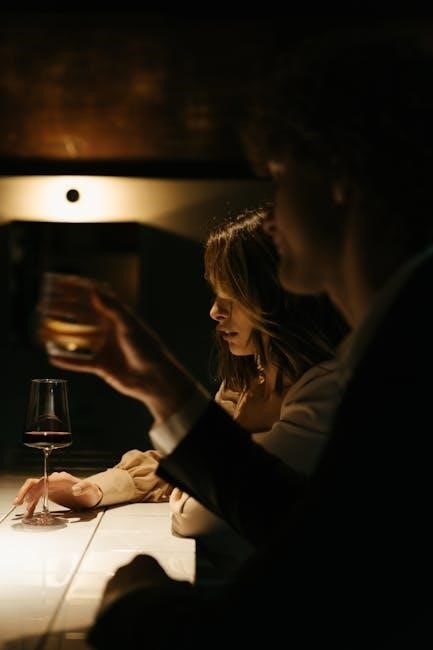A wine glass guide reveals how shape and design enhance aroma and flavor, with specific glasses tailored for red, white, sparkling, and dessert wines.
Importance and History of Wine Glasses
The importance of wine glasses lies in their ability to enhance the aroma and flavor of wine. Historically, wine glasses have evolved from simple, undifferentiated vessels to specialized designs tailored for specific wines. Ancient civilizations, such as the Romans, used goblets, while modern glassware emphasizes precision in shape and size. The development of crystal glass in the 18th century revolutionized wine tasting, allowing for thinner rims and clearer construction. Today, companies like Riedel have popularized the concept of varietal-specific glasses, demonstrating how the glass’s shape directs wine to the appropriate part of the palate. This historical progression highlights the growing understanding of how glassware impacts the wine-drinking experience, making it an essential tool for connoisseurs and casual drinkers alike.
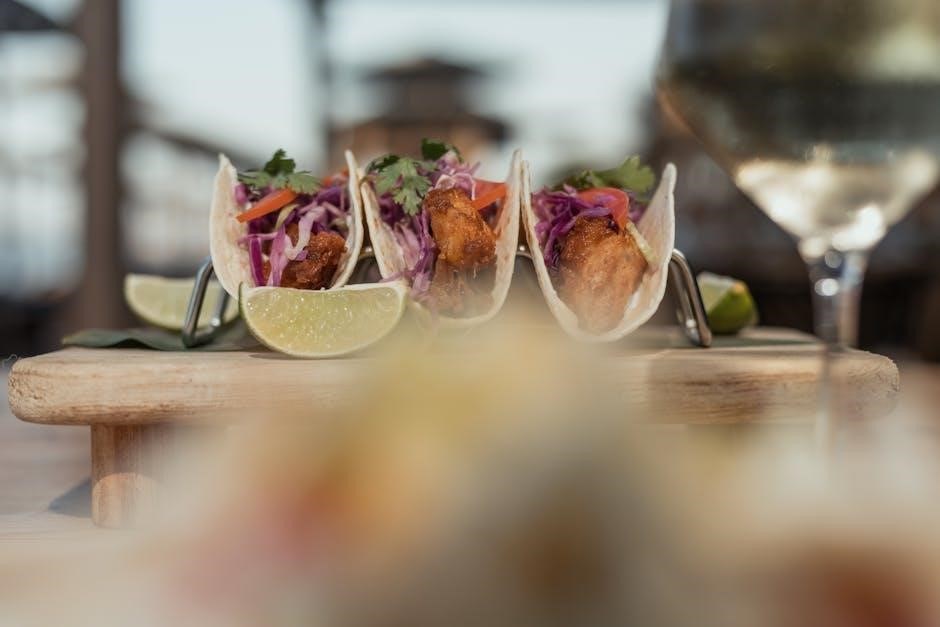
Anatomy of a Wine Glass
A wine glass consists of three key components: the bowl, which holds the wine, the stem, which provides balance, and the base, ensuring stability.
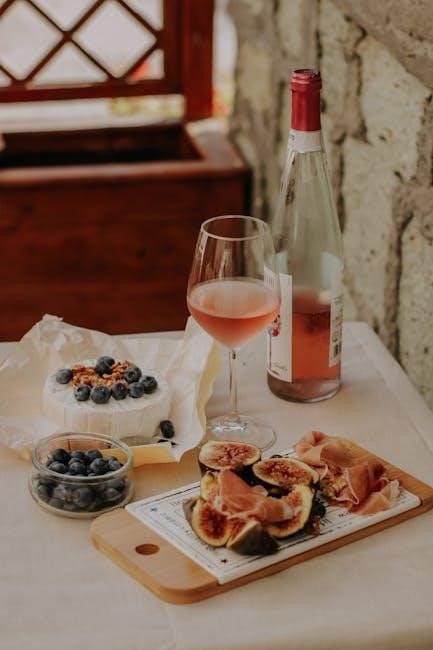
The Bowl
The bowl is the upper part of the wine glass that holds the wine. Its shape and size are designed to enhance the aroma and flavor of the wine. For red wines, a larger, rounder bowl allows for better aeration, bringing out bold flavors. White wines typically use a smaller, narrower bowl to preserve delicate aromas. The bowl’s opening directs the wine to the appropriate part of the palate, optimizing the tasting experience. Sparkling wines use a tall, narrow bowl to maintain carbonation. The bowl’s design is crucial for highlighting the unique characteristics of each wine, making it a key factor in the overall design of wine glasses.
The Stem
The stem of a wine glass is the long, narrow part that connects the bowl to the base. Its length and width are designed to provide a comfortable grip, allowing the glass to be held without touching the bowl. This prevents the wine from being warmed by hand heat, which could alter its temperature and flavor profile. The stem also plays a role in the aesthetic appeal of the glass, contributing to its balance and elegance. A longer stem is often associated with red wine glasses, while shorter stems are common in dessert or fortified wine glasses. The stem’s design ensures proper handling and enhances the overall wine-tasting experience, making it a vital component of the glass’s structure. Its functionality and style are carefully crafted to complement the bowl and base, ensuring optimal performance and visual appeal.
The Base
The base of a wine glass is the flat, circular or oval-shaped part that provides stability and prevents the glass from tipping over. Its size and weight are carefully designed to ensure balance, with larger and heavier bases often used for red wine glasses to accommodate the wider bowls. The base also contributes to the overall aesthetic appeal of the glass, with some designs featuring intricate patterns or finishes. Materials like crystal or high-quality glass are commonly used, enhancing durability and clarity. A well-crafted base ensures the glass stands securely on any surface, allowing the wine to be appreciated without distraction. Its design complements the bowl and stem, creating a harmonious and functional structure that elevates the wine-tasting experience. The base is a subtle yet essential element in the anatomy of a wine glass.
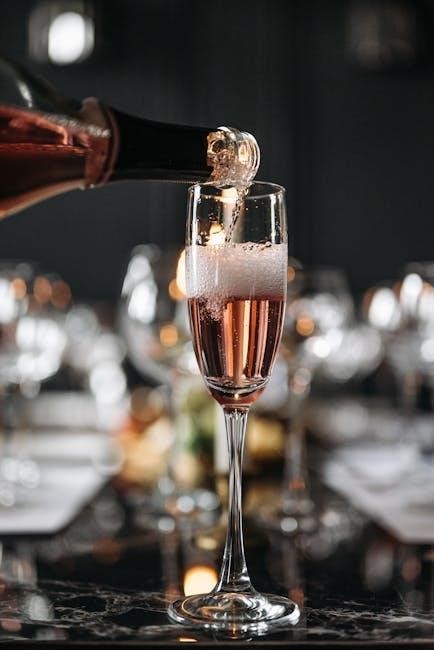
Major Types of Wine Glasses
Major types of wine glasses include red, white, sparkling, and dessert glasses, each designed with unique shapes to enhance specific wine varieties’ aroma, flavor, and overall experience.

Red Wine Glasses
Red wine glasses are crafted with a larger, rounded bowl to allow ample oxidation, enhancing the complex flavors and aromas of full-bodied wines. The stem provides balance, while the wide rim directs the wine to the back of the palate, balancing tannins. These glasses are ideal for robust varieties like Cabernet Sauvignon and Syrah. Specific designs, such as Bordeaux and Burgundy glasses, cater to particular red wines, offering tailored shapes for optimal aroma release and flavor profiles. The size and shape of red wine glasses play a crucial role in elevating the drinking experience, making them indispensable for wine enthusiasts.
White Wine Glasses
White wine glasses are designed with a smaller, more upright bowl compared to red wine glasses, allowing delicate aromas to be preserved. The narrower rim directs the wine to the front of the palate, enhancing the perception of acidity and freshness. This shape is particularly suited for crisp and citrusy whites, such as Sauvignon Blanc and Pinot Grigio. For richer, oak-aged whites like Chardonnay, a slightly larger bowl is often used to accommodate the wine’s complexity. The stem and base provide stability, ensuring the wine reaches the correct part of the mouth. White wine glasses are essential for showcasing the subtle nuances of white varietals, making them a must-have for any wine enthusiast.
Sparkling Wine Glasses
Sparkling wine glasses, often called champagne flutes, are designed with a tall, narrow bowl to preserve carbonation and direct delicate aromas. The slender shape ensures bubbles rise gracefully, enhancing the visual appeal and flavor. The narrow rim focuses the wine’s effervescence to the back of the palate, balancing acidity and sweetness. Flutes are ideal for champagnes, proseccos, and other sparkling wines, as they maintain the wine’s lively character. Some designs feature a slightly wider bowl for rosé champagnes or aged sparklers. The elegant appearance of these glasses adds to the celebratory nature of sparkling wines, making them a cornerstone of wine glass collections for special occasions and everyday enjoyment alike. Their functionality and aesthetic appeal make them indispensable for any wine enthusiast.
Dessert Wine Glasses

Dessert wine glasses are designed for sweet, rich wines like Sauternes, Port, and Moscato. These glasses typically have a shorter stem and a smaller, wider bowl to concentrate the intense aromas. The rim is often slightly outturned to direct the wine to the front of the palate, balancing sweetness with acidity. Their compact size allows for controlled portion sizes, as dessert wines are usually served in smaller amounts. The shape enhances the complex flavors of these wines, making them a perfect match for post-meal indulgence. Whether for a decadent chocolate pairing or a fruity Moscato, dessert wine glasses elevate the experience, ensuring every sip is a delightful combination of aroma and taste.

Choosing the Right Wine Glass
Selecting the right wine glass involves understanding the wine’s characteristics, as the shape, size, and material of the glass can enhance or diminish the tasting experience.
Factors to Consider
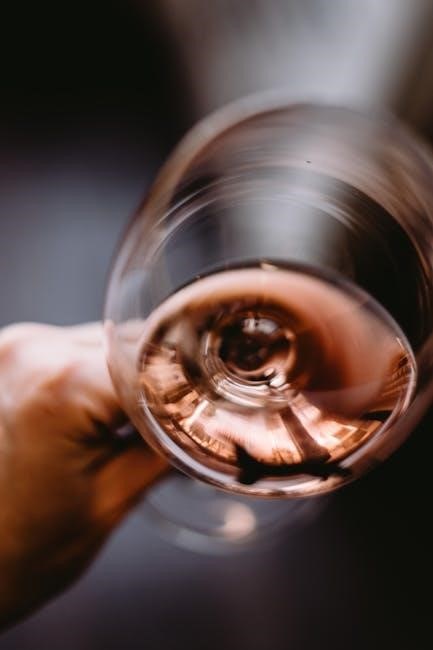
When selecting the right wine glass, consider the type of wine, as different shapes enhance specific characteristics. Red wines benefit from larger bowls for oxidation, while white wines thrive in smaller, tapered glasses to preserve crispness. Sparkling wines require flutes to retain effervescence. Material matters too, with crystal glasses offering clarity and thin rims for better aroma release. Size and shape should complement the wine’s aroma and flavor profile. Personal preference also plays a role, as some prefer universal glasses for versatility. Lastly, consider the brand and quality, as reputable manufacturers like Riedel and Schott Zwiesel offer expertly crafted designs tailored to specific varietals.
Popular Brands and Models
Leading brands like Riedel and Schott Zwiesel are renowned for their high-quality, varietal-specific wine glasses. Riedel’s Vinum series offers precision-engineered shapes for optimal flavor release, while Schott Zwiesel’s Tritan Crystal collection combines durability with elegance. Crate & Barrel provides stylish, versatile options for everyday use. The Schott Zwiesel Pure Tritan Crystal Stemware is a top choice for its universal design, suitable for most wines. Riedel’s Oaked Chardonnay glass is a favorite among white wine enthusiasts, and their Bordeaux glass is prized for red wine lovers. These brands blend craftsmanship with expertise, ensuring enhanced wine tasting experiences. Investing in reputable models elevates both the aroma and flavor of fine wines, making them must-haves for wine connoisseurs.
Maintenance and Care of Wine Glasses
Proper cleaning and storage are essential for maintaining wine glasses. Use gentle soap, avoid scrubbers, dry thoroughly to prevent water spots, and store upright to prevent chipping.
Cleaning and Storage Tips
Proper cleaning and storage are crucial for maintaining the quality and longevity of wine glasses. Use mild soap and warm water, avoiding abrasive scrubbers or harsh chemicals that can scratch the glass. Rinse thoroughly and dry with a lint-free cloth to prevent water spots. For delicate or hand-painted glasses, hand washing is recommended; avoid using a dishwasher. Store glasses upright in a dry place to prevent moisture from accumulating inside the bowls. Avoid exposing glasses to direct sunlight, as UV rays can cause discoloration. For added protection, consider using a wine glass storage rack to prevent chipping and breakage. Regular maintenance ensures your wine glasses remain sparkling and functional for years to come.
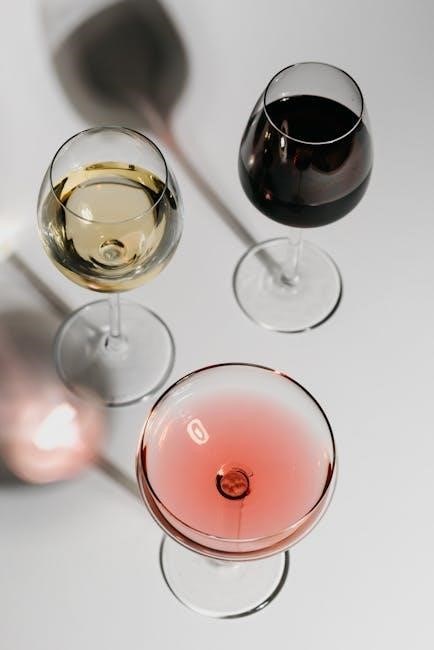
The Impact of Glass on Wine Tasting
The shape and size of a wine glass significantly influence aroma and flavor perception, enhancing the overall tasting experience by directing wine to the appropriate palate zones.
How Glass Shape Affects Aroma and Flavor
The shape of a wine glass plays a crucial role in enhancing the aroma and flavor of wine. A wider bowl allows red wines to oxidize, releasing bold flavors and aromas, while narrower bowls preserve the crispness of white wines. Sparkling wine flutes, with their tall, narrow design, retain effervescence, ensuring the bubbles last longer. Dessert wine glasses, smaller in size, concentrate sweet aromas. The rim’s opening directs the wine to specific zones of the palate, balancing acidity and sweetness. Proper glassware enhances the nuances of each varietal, making the tasting experience more enjoyable and refined.
